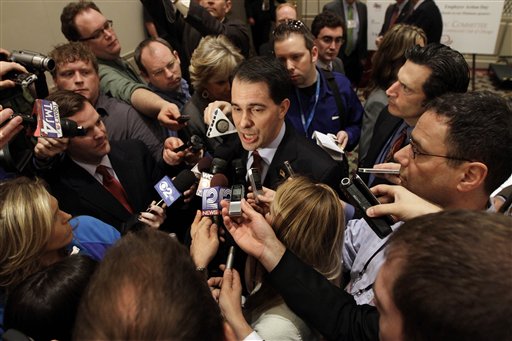Unions now subsist on taxpayer dollars. This year’s annual BLS report on union data reaffirmed a decade old trend: union growth is predicated on an ever-growing government. 2012 marks the third consecutive year there were more public sector union member employees than private sector union employees. With a membership rate 5 times higher than the private sector, 37 percent of all government workers are unionized compared to 6.9 of private sector employees.
And this trend is unlikely to change. Unions have consistently priced themselves out of domestic manufacturing jobs, once the bread and butter of the large unions. Weighing American companies down, union contracts burdened employers with untenable workforces and lavish compensation. Coupled with inhibitory rules that blocked innovation in an increasingly competitive world, many employers were dragged down by their unions and went under.
Anecdotally, this is exactly what happened to America’s car manufacturers, the Big Three. Before Chrysler and General Motors filed for bankruptcy, these companies were paying nearly twice the hourly rate of their Asian competitors with American plants. This unsustainable business model is indicative of companies and industries that were heavily unionized. It then comes as no surprise that private sector unionization fell from 24 percent of the workforce in 1973 to 6.9 percent today.
Unfortunately for taxpayers, many of the market forces that keep unions in check in the private sector are not present in the realm of government. If a company is inefficient and makes poor investments, it goes out of business. If a locality or state makes equally disastrous personal decisions, its citizens foot the bill–there are few built in mechanisms to control government spending.
Reading the tea leaves, unions realize their clout lies in their ability to expand the size of government and unionize its employees. This new reality explains why unions have gone “all in” trying to recall Wisconsin’s Governor Scott Walker. In an effort to balance Wisconsin’s budget and empower the state’s employees, Governor Walker spearheaded modest, pro-worker reforms. Under Governor Walker’s law, teachers are now required to contribute a modest 5.8 percent to their pension plan. The state is allowed to fire inept teachers. All employees must pay 12.6 percent to their health care plan. Forced collective bargaining is prohibited. Before a union spends its workers’ dues on political activities, they must first get permission from their members.
To conservatives this is good governance. To liberals and unions it is an assault on workers’ rights. The demographic shift from private sector members to government workers has huge electoral implications; unions have never been more invested in state and local elections. Unions’ source of power, their massive war chests, have decided elections and ensured prominence. Any legislation which threatens to slow the flow of money from workers to unions is immediately targeted. When viewed through this lens, it is easy to see why Governor Walker and Governor Kasich’s (R-Ohio) reforms were met with such hostility.
Finding a natural ally with the Democrat Party’s “bigger is always better” view of the public sector, nearly every union dollar spent on elections benefits Democrat candidates. The largest public sector union, The American Federation of State, County and Municipal Employees (AFSME) spent $78 million during the 2008 election and $87 million in 2010, making the union the largest spender during the last election cycle. And 2012 will be no different.
Conservatives must fortify their elected officials willing to advocate for reforms and incur the wrath of the unions. State battles like Wisconsin will continue as long as unions depend on government workers and taxpayer dollars for their livelihood. To read more about the rise of government sector unions and what conservatives are doing to push back against this interest group, pick up Debacle, a new book by Grover Norquist and John Lott.

COMMENTS
Please let us know if you're having issues with commenting.